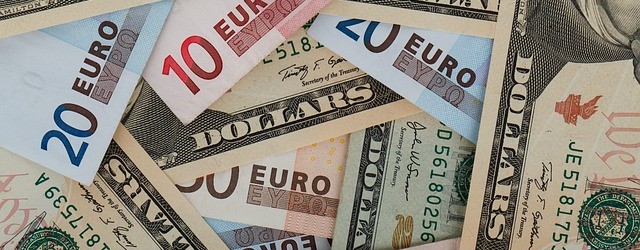If you look at large, globally successful companies, you will soon notice that there are companies with an incredibly high earnings power that can, for example, be measured in terms of return on equity. This is a kind of internal return on capital that can outperform the imputed return on fixed-income securities by far. On the other hand, we read of incredible amounts of liquidity that some companies have accumulated. Apple has accumulated a cash reserve of more than 150 billion euros, as we have already reported in May 2013. But why are these funds not paid out to shareholders? Isn’t there an obligation to pay out the generated profits? These questions are of interest to all those who want to generate income from their current investment rather than just achieve an increase in net asset value.
The high significance of the dividend yield
The cash flow or also the earnings per share (EPS) generated by a company already provide a significant indication of the expected success of the current and perhaps the next financial year. After the deduction of the accruing taxes, there are two possibilities for the use of the increase in value, which are mostly used simultaneously: The profits are paid out to the shareholders as dividends and undistributed profits remain in the company as net asset value. On various websites or at many direct banks, you will find a key figure that exactly describes the proportion that is paid out to the shareholders. This annual dividend (or the value expected for the next year) is correlated to the current market price and yields the key figure of the dividend return. The higher this value in percentage, the better the return on the shares. At the beginning of June 2014, the dividend yield of the top 10 DAX companies was between just over 3.1 and 4.6 percent. This figure can play an interesting role in your investment strategy in shares or investment funds, which you can read more about below.The invitation to the general meeting is clear-cut
The annual general meeting of shareholders decides on the appropriation of profits. In most cases, it follows the management’s original proposal, which is included in the invitation to the general meeting. Usually the balance sheet profit is divided: A sum for the dividend distribution is stated and an item that is called “allocation to retained earnings” or similar is included. By simply dividing the distributed amount by the balance sheet profit, you can see how high the proportion of profits paid out is immediately on the day after the general meeting.You can often recognize the different cultures of profit appropriation by the formulations of the management. Talk of a dividend continuity or a high participation of the shareholders in the profit speaks for a good dividend. On the other hand, there are “profit-hoarders” such as Amazon, Apple & Co. who pay out very little or no dividends at all. The focus here is on the long-term accumulation of substance.You can compare these different strategies to the differentiation for investment funds. There is an even more extreme opportunity for profit appropriation called “accumulating fund”. Such a fund is very suitable for retirement planning, as the profits not distributed in the year of origin remain in the fund assets and quickly yield the interest and compound interest effect. Our editors, however, prefer the annual payout of funds and shares already for psychological reasons, as you can see directly on the bank statement: Investing is worthwhile!High payouts meet potential savings in bank charges
The strategy of investing in shares with a high dividend yield, also popularly referred to as dividend kings, can be carried out in different ways. Ask your bank for a reputable equity fund with a good rating and strong past performance that focuses on high dividend yields. You will also find a great deal of information in the offers of the direct banks. Or put together your own portfolio with a few DAX companies. This way, you will achieve higher yearly capital returns than you would if you did not pay attention to the dividend kings.Then you should consider that the investment in shares or a stock fund serves the long-term accumulation of assets. In order to save as much as possible to be able to spend it later, the focus can also be on the deposit fees of the banks. With our deposit account comparison calculator, you will find a very wide range of bank services and products that offer a very good service for little money.A quick glance back
If you have already dealt with dividend payments and the capital requirements of different industries, then you might ask yourself: Why do companies not have to pay out a certain minimum percentage of profits? The answer lies in the development of freer financial markets. In the second half of the 1990s, several changes were made to the Stock Corporation Act, which meant a considerable increase in transparency, especially for German investors. Since then, quarterly reports and financial figures are made available to all market participants at the same time, so that private bank customers also receive a high degree of information. In return, however, shareholders should also be able to decide on the appropriation of profits. An earlier regulation that a maximum profit percentage could be allocated to “free reserves” and that the remainder had to be paid out as dividends was therefore dropped.It is therefore advisable to take a closer look at the previous dividend yield as well as considering the spread over several shares or the professional risk diversification within an equity fund.The dividend kings of shares,Anzeige




